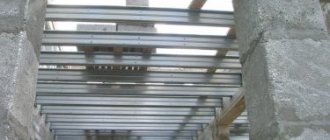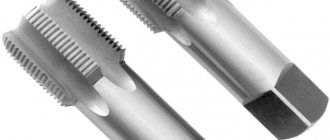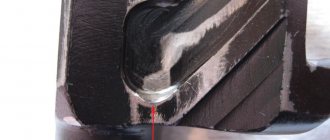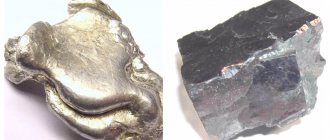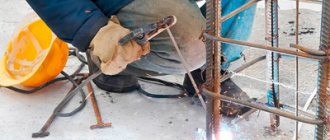Bored piles are often used for a strong and functional foundation. This is a type of pile foundation, when concrete is poured into a hole made in the ground, in which a reinforcing frame is placed. On loose soils, special formwork or casing are used for strengthening. This technology is suitable for the construction of country houses and industrial facilities. It is used for work in urban areas, where vibration is contraindicated for surrounding buildings.
Description and Application
The technology of a bored foundation made of piles with a connecting grillage is described in the construction rules SP 50-102-2003. Several basic techniques for constructing bored foundations:
- Using a continuous auger (CSA) with simultaneous supply of concrete mixture from the bottom to the top of the well through a process valve.
- Protection against destruction of the walls of a hole in the ground by creating back pressure of bentonite solution.
- The use of casing pipes loaded and retrieved using vibratory hammers or a “dreiteller” (rotating loader).
According to each of the technologies, concrete is fed into the well, with reinforcement pre-installed in it, and set directly in the soil. On loose, moving, wet soils, in private construction, casing pipes are required to hold the concrete in the well. After the concrete mixture has hardened, the pipes are carefully removed or left as permanent formwork.
Bored piles are used when it is difficult to use other types of pile foundations:
- in the city, where noise from driving can have a negative impact on surrounding residents;
- on swampy, soft soils, when it is necessary to get to hard layers;
- when constructing structures on sites with a steep slope;
- in industrial construction.
A bored foundation must be made with a grillage, which is a frame made of reinforced concrete monolith connecting the pile heads. This is done to evenly distribute pressure on each element of the base. The result is a strong strip foundation with bored piles, which can be used on difficult soils.
Related:
| 1-ppr project for the construction of a “wall in the ground” | A methodological example is a work production project (PPP) for the installation of a panel high-rise building. The work production project consists of a general section and technological maps for the installation of a standard floor, a second floor on a monolithic… |
| “Object” project for the production of work “Tank for 1000 m3” ppr RVS 1000 m3 2015 This technological map was developed by the production and technical department of the LLC, on the basis of regulatory, technical and design… | Technical specifications 2016 General information Subject of work:... In electronic form for the right to conclude an agreement to perform work on the installation of anti-erosion structures (gabions) and fencing... |
| Departmental construction standards VSN 165-85 “Construction of pile foundations... The standards establish requirements for specific types of work on the installation of drilled piles: drilling wells and expansions in soils or driving... | Construction of a sidewalk with asphalt concrete surfacePpr) and other organizational and technological documentation, as well as for the purpose of familiarization (training) of workers and engineering… |
| Typical flow chart (ttk) for eliminating the technological gap...Ttk is intended for use in the development of Work Projects (PPP), other organizational and technological documentation,... | Laying a gas pipeline at the intersection with an existing pipeline of Work Projects (PPP), other organizational and technological documentation, as well as for the purpose of familiarization (training) of workers... |
| CJSC "Service Oil Company" Project for the repair of the M-21 Volgograd - Kamensk-Shakhtinsky highway to the border with Ukraine (to Dnepropetrovsk,... | Project for the production of works for cladding facades with siding, corrugated sheets, linear panelsThe project for the production of works is the main organizational and technological document for cladding facades with siding, corrugated sheets,… |
| Work project for the installation of a roof made of element-by-element sandwich panelsThe work project is the main organizational and technological document for the installation of a roof made of element-by-element sandwich panels… | Construction codes and regulations SNiP 06.04-91 “Bridges and pipes” (approved...... |
| Creation of a geodetic alignment basis for the construction of objects and structures of theGical process and determining the composition of production operations using the most modern means of mechanization and methods... | Typical flow chart (TTK) installation of road, retaining,...Gical processes and the determining composition of production operations using the most modern means of mechanization and methods... |
| A typical flow chart (TTK) for cutting external walls from wooden beams is intended for use in the development of a Work Project (PPP) by construction departments and is its… | Guidelines for developing a course project for the discipline... Guidelines are intended for full-time and part-time students of the Faculty of Civil Engineering completing a course project... |
Manual, instructions for use
Instructions, instructions for use
Classification
The bored foundation is classified depending on the manufacturing technology. On clayey and other dense soils, the NPSH (continuous hollow auger) technique is used. The auger is a hollow pipe closed with a check valve that prevents the excavated soil from entering it. A strong spiral is attached to the pipe, lifting the soil to the surface like a classic drill. When the required depth is reached, concrete is fed into the pipe cavity under high pressure. It opens the valve, gradually filling the well as the auger rises upward. To make the bored pile stronger, a reinforcing frame is introduced into the concrete using a powerful vibrator. After pouring, the pile is left until the solution reaches the required strength.
The second technique is the installation of bored piles with a casing; this technology is used on unstable soils. The pipe protects wells from collapse when a reinforcing structure is introduced into it or excess pressure is applied to the poured solution. To do this, a well is drilled along the diameter of the pipe, which is placed into it by rotation, pressing, or simply installed there. After this, the drill is removed from the ground, and reinforcement is installed in the well so that a protective layer of concrete of about 60 mm is formed. Then the solution is poured with simultaneous compaction, and the casing is gradually removed from the well.
Technological stages of construction of the structure
After carrying out preparatory activities with clearing the work site, the following operations are performed:
Wells are drilled at control points. Casing pipes are immersed in them and the structure is strengthened. The lower part of the pipe is checked for leaks. An indicator of reliability will be the absence of groundwater in the shoe. Filling with concrete. Using a concrete mixing machine hose, the solution is poured pointwise into the niche of the casing pipe. Also, the technology for installing bored secant piles provides for the possibility of immersing a reinforcing frame. This should be done before the mixture hardens. Removing the supporting structure. The casing is lifted by crane after the first signs of hardening
It is important that the solution does not crystallize completely, otherwise the pipe will not be removed. Standing
Formation of concrete piles with strength gain. Strapping. After installing a group of piles, they are tied with a reinforcing metal belt.
Features of the technology
In construction, bored foundations are becoming increasingly popular. This is explained by the advantages of this technology, which allows the construction of structures on almost any soil. Features of bored piles include:
- Wide range of application, possibility of use on both dense and unstable soils (heaving or loose soils, near water bodies).
- Fast construction of the foundation. Technology using bored piles makes it possible to complete all work faster than pouring a strip base or Swedish slab.
- Built in compliance with all standards, the foundation on bored piles will last at least 150 years.
- Simplicity of design due to the relatively small volume of excavation work; it is enough to drill wells.
- The ability to independently select the diameter and height of the supports, the type of reinforcement, depending on the properties of the soil and the design features of the building.
- Increased load-bearing capacity. Such a foundation can support the weight of multi-story, industrial buildings, and massive reinforced concrete structures.
The diameter of the pile is selected in accordance with the current SNiP after geodetic surveys, taking into account climatic and geological features. Directly during design, the mass of the building, the number of supports are calculated and the type of soil is determined. Information on the bearing capacity of bored piles on different soils can be found in the table:
Bored foundation technology has disadvantages, which include:
- use of heavy equipment for drilling, installation of casing pipes, reinforcement at large construction sites;
- relative complexity of technological processes;
- the need for calculations.
Types of bored piles
Currently, manufacturing plants produce metal rectangular drilling structures with a widening at the bottom of the barrel, a fixed element and stiffeners. The load-bearing capacity of the drilling structure is ensured by a special cylindrical insert located between the tip and the body of the pile.
It is also allowed to use hollow piles followed by filling with concrete mixture. The dimensions of bored structures are selected based on calculated data.
Metal drilled piles
Construction of a bored foundation
This type of foundation is used not only in industrial, but also in private construction. Building a foundation on bored piles requires special equipment, but it is faster and cheaper than pouring the popular strip foundation. An important feature of a bored foundation is the possibility of its independent construction using hand-held or motorized drills.
Before starting work, you need to prepare the tools and materials:
- tape measure, a roll of cord, a set of pegs and a hammer for marking;
- drill for wells - manual, electrically driven or with an internal combustion engine;
- formwork made of roofing felt, plastic, reinforced concrete or asbestos cement, so that they can be left in the well; for industrial construction, removable casing pipes will be needed;
- reinforcement for supports and grillage;
- tools for preparing concrete mortar, cement, crushed stone, sand.
Necessary calculations
In order to correctly calculate the number of bored piles, it is necessary to determine the total mass of the building (weight of walls, floor slabs, communications, furniture, etc.). Considering that the piles are made of M300 concrete, with standard reinforcement, the load-bearing capacity of one bored pile can be found in the table:
| Pile diameter, mm | Support area, cm² | Load capacity, kg | Volume of concrete, m³ | Number of vertical bars of reinforcement, pcs. | Reinforcement consumption, linear m |
| 150 | 177 | 1062 | 0,0354 | 3 | 7 |
| 200 | 314 | 1884 | 0,0628 | 4 | 9 |
| 250 | 491 | 2946 | 0,0982 | 4 | 10 |
| 300 | 707 | 4242 | 0,1414 | 6 | 14 |
| 400 | 1256 | 7536 | 0,2512 | 8 | 18 |
Using portable drills, you can prepare wells with a diameter of up to 200 mm, which is why they are most often used in private construction.
To calculate the depth of the support, you need to find out the depth of soil freezing in the area and add 20 centimeters. For example, if freezing reaches 1.3 m, then bored piles are immersed to a depth of 1.5 m. On heaving, loose, swampy and mobile soils, additional research will be required, and when deepening it will be necessary to get to layers with hard rock.
To calculate the number of piles, you will need to divide the mass of the building by the load-bearing capacity of one support, and multiply the result obtained by an error factor of 1.2. It takes into account possible inaccuracies when determining the mass of the grillage, furniture, and snow load.
Preparation and marking
The foundation layout begins with a diagram of the pile field, which indicates the placement of bored supports. To do this, at the corners of the site, to make sure that it is rectangular, you need to measure the diagonals, they must be equal.
The first four bored piles are installed in the corners, the rest should be evenly distributed under the load-bearing walls. In the places where the wells will be made, pegs are driven in.
According to the technology, the distance between bored piles with a grillage should not exceed 2 m, but not less than 3 pile diameters, so as not to disturb the soil structure.
Installation
After the preparatory stages, you can begin installing bored piles with your own hands. Using a manual, mechanical or electric drill, we drill holes to a given depth, according to the markings.
Prefabricated reinforcement cages are lowered into the wells and casing pipes are installed. They can be made of metal, plastic, roofing felt, asbestos, reinforced concrete. In private construction, they serve as permanent formwork for future bored piles. The main condition is precise vertical installation in level.
The space between the casing pipes and the well is filled with soil, which is periodically compacted. In this case, it is necessary to control the verticality of the pipe. The height of the piles is checked with a hydraulic or laser level so that the piping is horizontal. If the pipes are higher, they are cut off, the reinforcement cage remains as the basis for tying the grillage together.
M300 grade concrete mortar is poured into the prepared formwork, which is compacted with a manual tamper or vibrator. The poured bored piles are left until the cement has completely set within 2-3 weeks.
Pouring the grillage
To achieve maximum strength, the bored foundation is connected with a grillage - a reinforced concrete strip or frame. It distributes pressure evenly on all piles. The construction of the grillage is similar to the construction technology of a standard strip foundation. The only difference is that its lower part is suspended, without resting or going deep into the ground. The basis of the grillage is the pile heads raised above the ground to the design height.
The width of the grillage is equal to the thickness of the load-bearing walls, the height for wooden and foam concrete walls is equal to the width. For stone and brick buildings - 50% more width. The grillage is poured in several stages:
- formwork is installed in the form of a box, in which holes are made for piles and future utilities;
- a monolithic grillage must be reinforced according to the requirements for reinforced concrete structures, the frame is connected to the protruding reinforcement of bored supports;
- a concrete mixture is poured into the formwork, which must set completely, then the formwork is dismantled;
- The surface is waterproofed with a roofing felt tape folded in two layers, or with coating compounds.
Permafrost soils: characteristics, properties
Permafrost is considered to be those soils that have been in a frozen state for 3 or more years, they have an unstable structure, and upon thawing they undergo significant subsidence as a result of disturbances in the natural structural state.
Section of permafrost soil
The permafrost layer is divided into two parts vertically:
The active layer is the surface layer of frozen soil that undergoes partial thawing during the summer season and freezes again with the onset of winter. Intensive processes of thawing and freezing of the soil cause heaving, which negatively affects the stability and strength of buildings built on this soil foundation.
The thickness of the active layer depends on the climate of the area and the geological composition of the underlying soil; it can range from 0.3 to 4.0 meters, while moving southward, the thickness of the active layer increases significantly. The surface layer reaches its greatest thickness in soils composed of sand and fragmented rocks that have open pores.
There are two types of active soils:
- Merging - in winter cold conditions, the soil of the active layer freezes to its entire thickness and freezes with the permafrost of the base on which it rests.
- Non-merging soils - between the active soil layer and the permafrost continental layer, there is a non-freezing bridge.
Permafrost - this soil layer is usually divided into two types:
- Continuous frozen layer - consists of a continuous homogeneous layer of frozen soil.
- The thickness is layered - represented by layers of frozen soils, ice inclusions or layers that are washed away by subsurface waters.
Permafrost can be composed of soils of any type, among which the main groups of soils are most widely represented. The smallest percentage of frozen soils consists of rocks.
Hard frozen soil
Based on their condition, permafrost soils are usually divided into the following types:
- Hard frozen - this type is represented by frozen sand, which in a frozen state acquires all the properties and characteristics of rocky soil.
- Plastically frozen - consist of clayey rocks, which, as a result of deep freezing, contain frozen water, and can compress when exposed to certain loads.
- Granular frozen soils - this group consists of sandy and gravel soils, which, even in a frozen state, are not frozen and are in a fairly loose state.
Advice from professionals
Despite the fact that you can make a bored foundation yourself, during construction there are many aspects known only to experienced builders who share their experience. To avoid mistakes during construction, pay attention to the following points:
- carefully study the type of soil, for which it is better to perform geodetic reconnaissance, taking into account the information received when selecting the diameter and depth of installation of piles;
- for private construction, do not use supports with a diameter of more than 200 mm, since their installation will require special equipment, which will make the foundation more expensive;
- when pouring casing pipes, part of the reinforcement should protrude to the height of the future grillage to give it additional strength;
- the grillage can be poured only after the mortar in the bored piles has completely set;
- the distance between the bottom of the grillage and the ground surface should not be less than 150 mm so that it does not deform during swelling.
The construction of foundations from bored piles is a technology that is gaining popularity. It allows you to create a durable and inexpensive foundation for both private houses, light structures, and industrial buildings on any soil. The costs of constructing such a foundation are lower than those of constructing a classic strip foundation, buried below the freezing level of the soil, by an average of 40%. Strength and durability indicators remain comparable.
Control of completed work
The design is checked by a master or foreman, as well as a surveyor. Reinforcing frames, casing elements, parts of piles at the top point are inspected, compliance with standard dimensions, etc. is checked. Typically, these activities are carried out by visual inspection, taking into account design or passport data from the casing manufacturer. Operational control begins with the very manufacture of the pile and is carried out at every stage from drilling to installation of the strapping belt
At these stages it is important to control the accuracy of the barrel position. In particular, before the concrete hardens, the verticality of the secant pile must be checked using levels and levels
A correctly installed casing pipe is fixed and reinforced with supporting elements. As for the tasks of the surveyor at the control stage, he performs a breakdown of the pile field, after which he draws up a technological map of the construction site indicating the points for placing the piles.
Brown secant piles are
The construction of a secant pile is designed to ensure high strength of the created structure. In its standard form, the diameter of a bored secant pile ranges from 620 to 1000 mm. Such parameters make it possible to close the need for supports.
The scope of application of bored secant piles extends to several areas that are important from a structural point of view:
Brown secant piles
- Construction of an underground wall before digging a pit.
- Construction of foundations of buildings and structures in populated areas of the city.
- Creating a pit fencing.
- Construction of retaining walls.
- Curtains performing anti-filtration curtains.
- Creation of additional fortifications for old and dilapidated structures.
Reinforcement of the pile is carried out through the pile. The strength of the structure being erected is ensured by frequent placement of supports and additional concreting. As a result, the structure receives high load-bearing performance and is able to withstand impressive loads.




